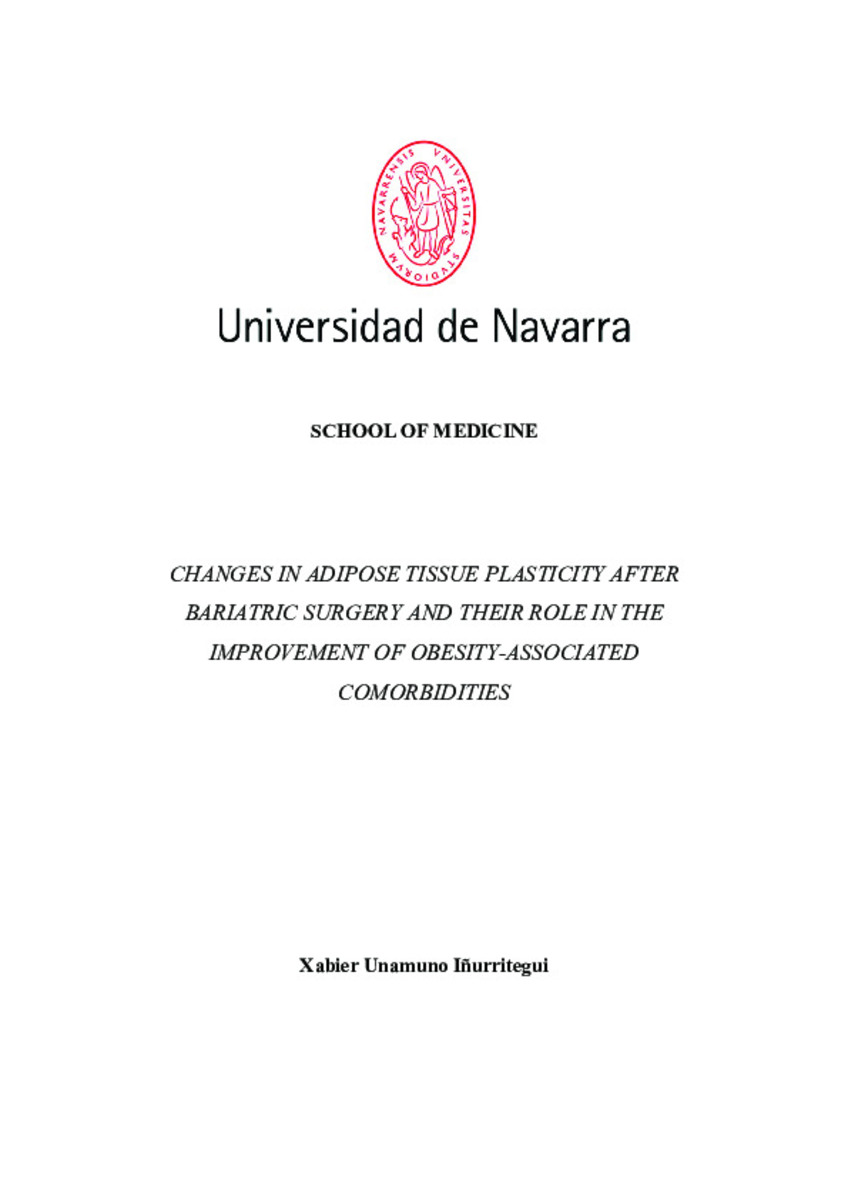Changes in adipose tissue plasticity after bariatric surgery and their role in the improvement of obesity-associated comorbidities
Keywords:
Materias Investigacion::Ciencias de la Salud::Nutrición y dietética
Obesity-associated comorbidities
Adipose tissue plasticity
Bariatric surgery
Obesity
AT biomechanical properties
Defense Date:
16-Jun-2023
Publisher:
Universidad de Navarra
Citation:
UNAMUNO, Xabier. "Changes in adipose tissue plasticity after bariatric surgery and their role in the improvement of obesity-associated comorbidities". Frühbeck, G., Catalán, V. y Elizalde, R. (dirs.). Tesis doctoral. Universidad de Navarra, Pamplona, 2023.
Statistics and impact
0 citas en

0 citas en

Items in Dadun are protected by copyright, with all rights reserved, unless otherwise indicated.







